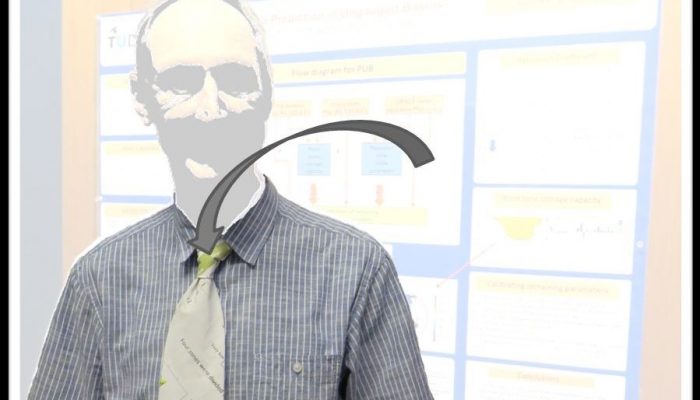
Conference posters: Most scientists spend tens (if not hundreds) of working hours perfecting their conference poster. There’s not just the science to think about, but also the design, the flow, the images, the language… The list is endless. Once complete, you print it, roll it up and feed it into the protective poster tube. Then you travel to the conference venue, whereupon you ‘compete’ with other scientist trying to stand-out from the crowd and entice fellow attendees to stop by your presentation, if only for a few minutes.
And then it is over, almost as quickly as it started. You pack up your poster to take back to your institution, to languish amongst the pile of other posters in a corner of your office. Best case scenario, you’ll revisit the electronic version when presenting on the same subject again and rework some elements. In all likelihood, the few hours of glory in the poster hall will be the climax of hours of hard work!
What if you could breathe a longer life into your poster? One which would mean you’ll reach audiences you never expected, while transforming your work into a brand new, useful product?
Today we speak to Sandra de Vries, a former master student, who also crafts posters into wearable garments, breathing a new lease of life into your scientific findings.
It all starts with a textile poster – where your presentation is printed on fabric as opposed to paper – which Sandra then turns into anything from a tie, to a tote bag, through to a skirt! The designs come complete with QR Codes, which people can scan to access the original presentation.
First, could you introduce yourself and tell our readers a little more about your background.
Hi, everybody! As a water ambassador during my studies, and currently working as project developer for the Valorisation Program Deltatechnology and Water, my interest for the water sector has been growing for a couple of years now. That brought me to my new job, where I just started working as IHP-HWRP Committee Secretary.
I take special interest in supporting and increasing innovative solutions in the water sector and creating awareness for the importance of water (on a national as well as international level) for which I helped set up the initiative Team Helder Water. I like to tackle challenges by being creative and enthusiastic about the solutions possible.
During my Water Management master at the Delft University of Technology I conducted research in the Mara River Basin – Kenia, Jakarta – Indonesia, and Ostional – Nicaragua. I conducted this research in cooperation with UNESCO-IHE, Deltares, and the research institute CIRA in Managua – Nicaragua, respectively. Living, travelling, and working abroad has created an interest of discovering other cultures and working together with them on challenging and global issues.
Repost is your initiative to turn textile posters into useable items. How did you come up with this original idea?
It actually all comes back to my time as an EGU conference assistant, during EGU2014 and 2015. For my work in the poster areas we were asked to remove all left-behind posters every evening. These are quite a few, and surprisingly, some posters turned out to be printed on textile instead of paper. After the first evening of throwing away perfectly nice posters that were only used for two effective hours, I discussed with a friend the waste of material, time, but especially effort. As I had been designing and making clothes of my own for a couple of years, I started joking about keeping some of the textile versions. “I could make a dress out of it and perhaps a beach bag for you!”, I exclaimed to my friend. So at the end of the next day, instead of throwing away the textile posters, I started collecting them. Beautiful pieces of research, all of them!
In the year after EGU2014 I did what I promised my friend, and chose two posters to become a beach bag and a dress. Again, in 2015 I joined as an assistant, and this time it was even better, I was working at the hydrology poster area. This gave me an even better possibility to collect textile posters, which often showed topics of my own interest! And during the Delft hydrology dinner in Vienna (every year organised by the division), I wore the dress made out of a poster from EGU2014. This resulted in really enthusiastic reactions, which only increased my own enthusiasm for the idea. After EGU2015 I created a couple of aprons which were used during the hydrology fieldwork of my master, and a pencil skirt for my own thesis defence. Of course with all topics matching that of my own thesis. And finally, I created the tie, a present for my supervisor Prof. Hubert Savenije.
Is the process of turning the posters into clothing items difficult? What does the process involve?
As you might imagine, posters are printed on a textile that is best compared to canvas. This is pretty stiff fabric, and for sure not everything can be made out of it. The first dress I made is actually the best example for this. I was not incredibly satisfied because the inflexible fabric did not allow for a nice fit. I also broke many a needle in my sewing machine, since the fabric is often thicker than normal fabric. So the product-possibilities depend on the type of fabric, and the thickness of the textile posters have thus far influenced my product choices.
The next step is like designing any other piece of clothes or accessories. You need to design a 2D-pattern that shows you which pieces of fabric you need to create a 3D product. In case of clothing, which naturally should also fit a person, one needs to take into account different clothing sizes.
You include QR codes in all the items you make, why is it such a unique feature?
The extra highlight of our product, especially interesting for researchers, is indeed the QR-code attached to the product. This QR-code redirects to the original poster of the author. Imagine the extra publicity you can create for your work in this manner!
Cutting up the poster in order to REmake it, can create a loss of the information contained in the poster. By including the QR-code we ensure to REpost the work to anybody who might be interested by what is shown on the clothing or accessories.
Which items have you enjoyed creating the most and why?
I still remember the first time people saw the beach bag I made for my friend. Everybody was enthusiastic, envying her for her new bag. This was very surprising for me, I had not expected that others would like the idea as much as I enjoyed it.
I am most proud of the pencil skirt I made. When I started creating it, I was not even sure if it would work out, and I wanted it to be perfect to use it for my own thesis defence. Eventually, it turned out to be great, and so original that I was asked by people where I bought it!
What next for REpost? Do you plan on pursuing this as a business where anyone can purchase items you’ve made?
Yes, definitely! It started out as a nice fun hobby and project. Now, after having talked to many people, I believe this has more potential than just keeping it for myself. Together with my sister Maria, we are finding ways to increase production, incorporate the QR-code and bring this to a higher level. To make it easier for you in the future, we’re actually in contact with conference organizers to incorporate this choice into the digital registration procedure.
If this sounds interesting to you as a poster-author and you’re planning to print on textile, contact us via our email address repost.poster@gmail.com or check our facebook page repost poster!

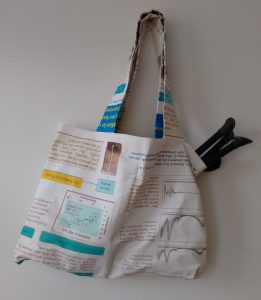
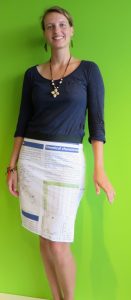
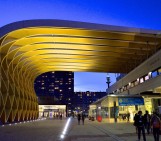
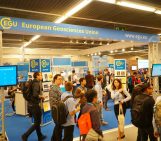
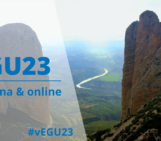
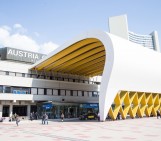
Pingback: GeoLog | Science is in fashion!
Mathieu L
What a wonderful idea to transform the transform posters into useful one. Textile professionals uses the best way to market their printing skills and designs but it is also mandatory to store and preserve them online.